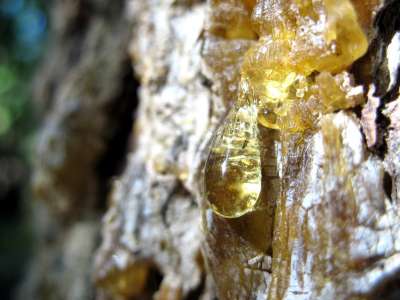Uses for Pine Resin – So Much More than a Sticky Mess
 If you've ever been out in a pine forest for any amount of time, you've probably had an unexpected encounter with some pine resin at one time or another. All you have to do is put your hand on a pine tree or sit on a log and you will have the resin with you for hours, if not days. I've always found it mildly annoying because it is so hard to get out of your clothes but I discovered at survivallife.com that there are many uses for pine resin in a survival situation.
If you've ever been out in a pine forest for any amount of time, you've probably had an unexpected encounter with some pine resin at one time or another. All you have to do is put your hand on a pine tree or sit on a log and you will have the resin with you for hours, if not days. I've always found it mildly annoying because it is so hard to get out of your clothes but I discovered at survivallife.com that there are many uses for pine resin in a survival situation.
Pine resin can be used in first aid. Pine resin applied directly over the wound will stop blood flow almost at once. The sticky nature of resin draws out moisture, inhibiting the growth of bacteria in the wound. Resin will close up a wound like stitches.
Pine resin can be used at waterproofing. Apply heated pine resin (this makes it more liquid) to the item that you want to waterproof. When you heat the resin, be sure you do so in a deep container, to keep it away from an open flame, as pine resin is highly flammable. Which leads us to the next use…
Pine resin can be used as a firestarter, even in damp conditions. Look for hardened resin and pine twigs and needles. Split the sticks and ignite the resin. The resin will burn easily enough for you to dry out the pine needles and you can gradually add larger kindling and wood.
Pine resin can be used as a heat or light source. When using it as a light source find something that will hold some resin (rock with a depression, a can, etc.). Place a wick in the resin, which can be just some twisted cloth. Light the wick and add more resin as needed. For a heat source, place a metal container with holes punched in the side on top of the flame. The metal will absorb and radiate the heat from the flame. It doesn't generate a lot of heat, but it is enough to warm hands or feet.
Pine resin can be made into glue. Heat some resin and add some finely crumbled charcoal into it. The ratio between resin and charcoal should be 3:1. Dip a stick into the mixture and stir until you get a ball of pitch at the end of the stick. When ready to use, just heat the pitch until it is pliable.
When collecting resin, look for areas where the resin is already on the surface of the tree, usually around a damaged surface. Look also for fallen limbs as they will be rich in sap as well. If you have to damage a tree in get some resin, do it in a small area and only on one side of the tree. Leave some on the tree to protect the wound from boring insects.
Who knew that pine resin could be so useful? Now when I go out in to the woods, I won't be so annoyed by the sticky sap. What uses have you discovered for pine resin? Have they worked well? Share your ideas with us.
Source: http://www.survivallife.com/2013/11/25/5-survival-uses-of-pine-resin/
Are you liking, following & pinning? Connect with our pages, boards & feeds.







No comments yet.